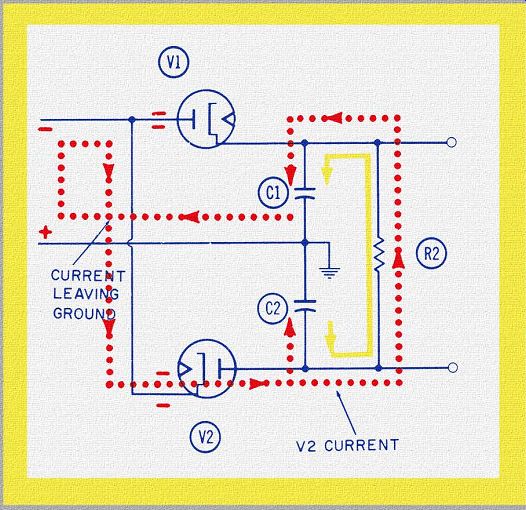AMAZON multi-meters discounts AMAZON oscilloscope discounts
Contents
- INTRODUCTION
- HALF-WAVE RECTIFIER CIRCUITS
- FULL-WAVE RECTIFIER CIRCUITS
- DIODE-DETECTOR CIRCUITS
- DIODE DETECTOR WITH AUTOMATIC VOLUME CONTROL
- GRID-LEAK DETECTOR CIRCUITS
- DISCRIMINATOR CIRCUITS
- RATIO DETECTOR

PREFACE
There is an interesting parallel between learning electronics and learning a foreign language. Even if a person never goes to school a day in his life, he usually learns to say enough words to get by. Contrast this with a diligent, intelligent high school student studying a foreign language. After two or three years of learning the rules of grammar, declension, spelling, etc., he may be capable of ordering an omelet in his newly acquired tongue unless the waiter asks: "Chicken or duck?" At this point, the whole communications process may break down, simply because the fundamentals were neglected somewhere along the line.
In the study of electronics ( or a foreign language) , it is difficult to define "fundamental." This volume, like the previous two on oscillator and amplifier circuits, does not attempt to settle the question. Instead, the text has been written with a single objective in mind-teaching or explaining how circuits operate. At the same time, certain theories such as Kirchhoff's, Ohm's, and Coulomb's are also explained, wherever they apply.
None of the volumes is considered more elementary or advanced than the others. Hence, any volume may be read in any order.
In fact, it is hoped that almost any section of any book can be read without reference to previous sections. This volume, like the previous two, presupposes only an understanding of the electron current theory.
Almost all electronic-circuit actions fall into one of five categories, in which electron current flows:
1. Through a pure resistance.
2. Through a pure inductance.
3. In and out of a capacitor.
4. In a resistor-capacitor (RC) combination.
5. In an inductor-capacitor (LC) combination.
These five basic circuit actions appear over and over in electronic-circuit operations. All volumes in this series have this one objective in mind-to explain such basic actions so that, by the end of the section, the reader will be able to understand how that circuit operates-no matter where it is encountered. After finishing this volume, he should intuitively understand how all detectors and rectifiers work and also the five actions listed above, on which all circuit theory and operation are based.
As before, the diagrams are of circuit actions rather than connections. The material is neither too advanced for the high school and technical institute level, nor too elementary for colleges. An understanding of circuit actions is the first step. If they can be visualized in the mind's eye, any circuit diagram can be easily interpreted, circuit troubles can be diagnosed and corrected, and a solid groundwork laid for those interested in more advanced theory.
The ability to visualize circuit actions should precede any attempt to learn the rigorous mathematical laws which describe them. This parallels our way of learning, where we first learn to describe before we infer, and then to infer highly concrete and hence obviously valid statements before tackling the more abstract ones.
The philosophy of this and other volumes is oriented around the movements of electrons-which, by definition, are electron currents. All statements about the function of an electronic circuit are in reality statements about electron currents; that is, functions are performed by currents--no currents, no functions.
Once the reader understands current movements, the more abstract terminology built up around the circuit functions will be come clear to him.
The author is indebted to those persons named in the preface to the oscillator volume for taking the time to review the drawings and proffer helpful suggestions. Additionally, a debt of gratitude is owed to Commander David O. Mann, U.S. Navy, for his many penetrating technical discussions, particularly on resonant circuits.
Note: This guide based on the 1964 book, Basic Electronics Series--Detector and Rectifier Circuits, by Thomas M. Adams, Captain, United States Navy HOWARD W. SAMS & CO., INC. THE BOBBS-MERRILL COMPANY, INC. Indianapolis • New York
Also see:
Industrial Electronics (in the early 1960s)
199 Electronic Test & Alignment Techniques (1972)